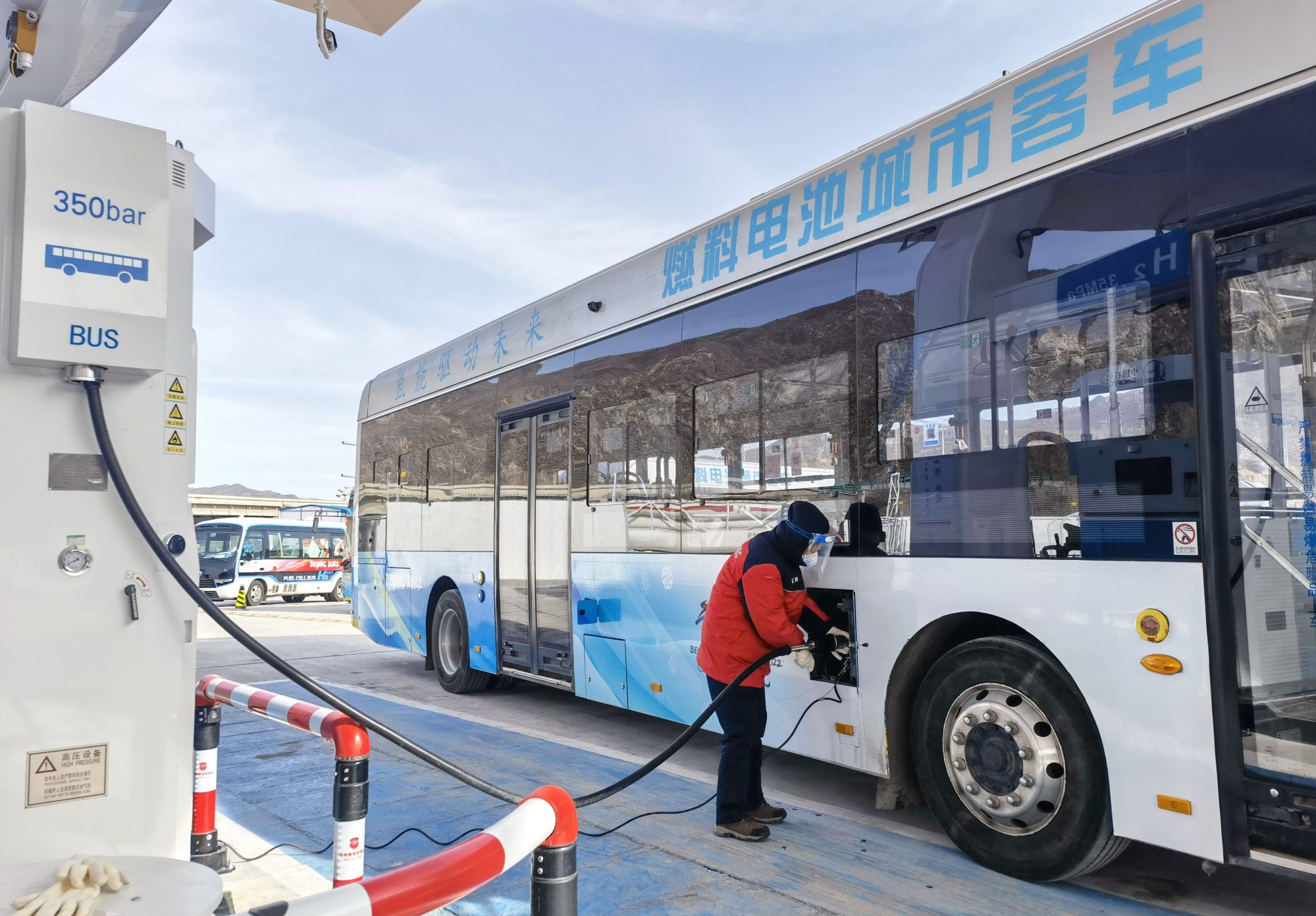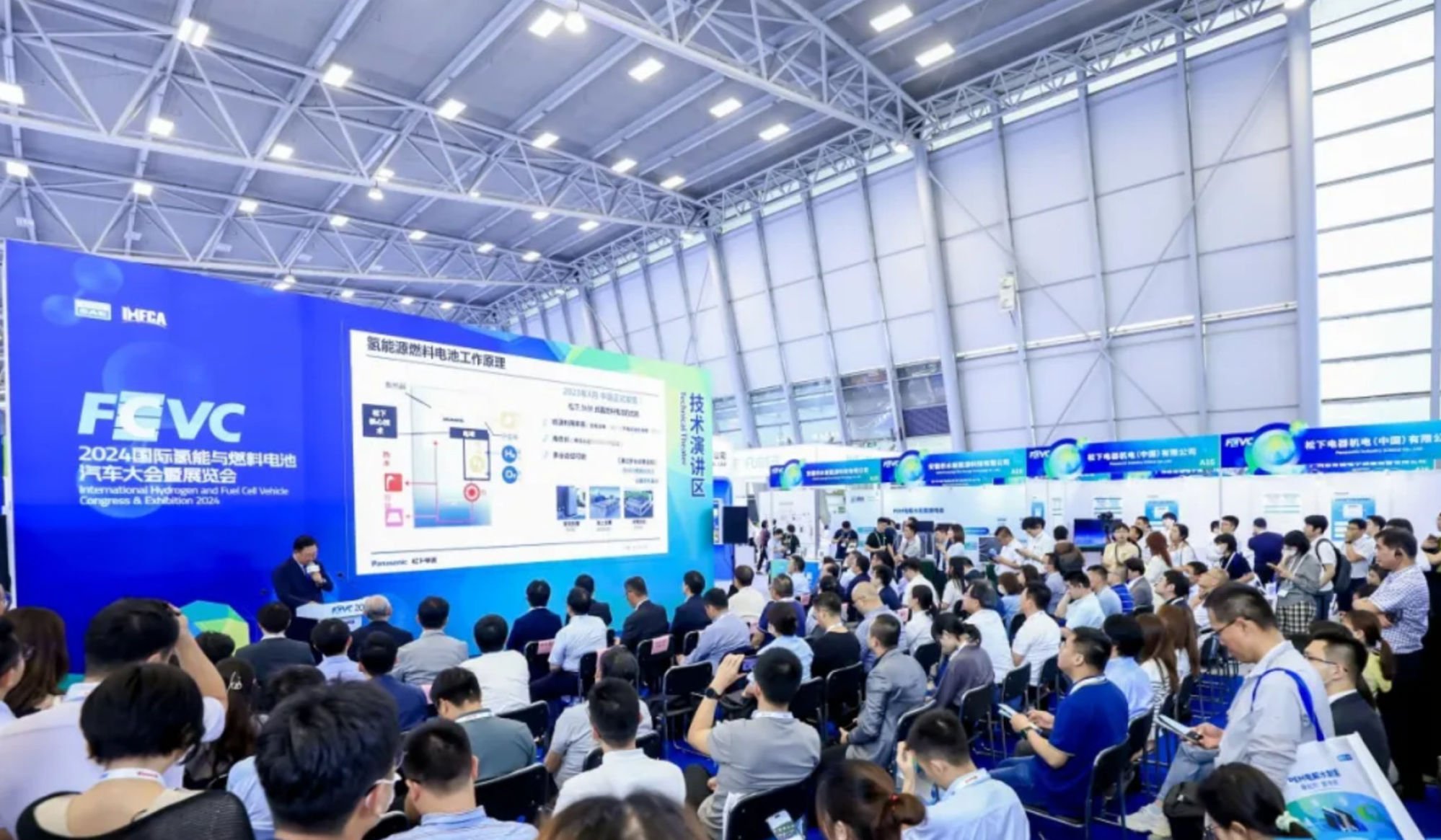Here is what you need to know about hydrogen vehicles and their prospects for widespread adoption.
How do hydrogen vehicles work?
Hydrogen can be burned directly as a fuel, as it is highly reactive and combustible. But that is not how it works in hydrogen-powered vehicles.
Hydrogen vehicles are powered by electricity that is generated from hydrogen by built-in fuel cells. In simple terms, these fuel cells turn hydrogen atoms into electricity and water molecules. The electricity then powers electric motors. This is why the common abbreviation for hydrogen vehicles is FCEVs (fuel cell electric vehicles).
While battery electric vehicles (BEVs) use electricity stored in batteries, FCEVs produce electricity onboard from hydrogen stored in a tank. BEVs recharge their batteries from the electric grid when they run low, while FCEVs must refill their hydrogen storage tanks.
What advantages do hydrogen vehicles have?
Like BEVs, FCEVs generate no greenhouse gas emissions when running. The only thing their tailpipes emit is water vapour. When FCEVs use “green hydrogen” – hydrogen produced by splitting water molecules using electricity from clean sources – they further reduce emissions, because the production process of the fuel is also carbon-neutral.
The biggest advantage users of FCEVs might notice over BEVs is the short refuelling time. Although this varies by model, it normally takes a few minutes to refuel the hydrogen storage tank in an FCEV, whereas a BEV can take many hours to recharge, and even the fastest chargers take around 20 minutes.

Long driving range is another advantage of hydrogen vehicles over BEVs. Toyota’s Mirai, the first mass-produced FCEV on the market, holds the current world record for the longest range in a hydrogen-powered car. It can travel 1,360km on a full tank of 5.65kg of hydrogen, double the current highest range for a BEV.
Hydrogen-powered heavy vehicles, such as trucks and buses, can have even longer range thanks to their ability to carry a larger amount of hydrogen.
What factors are working against hydrogen vehicles?
The availability of hydrogen fuel is the biggest challenge for FCEVs. Green hydrogen is often produced in regions where renewable energy is abundant, but these are often far from the demand centres.
Unlike electricity, which is delivered through transmission and distribution lines at nearly the speed of light, hydrogen has to travel on the road via tanker trucks, or tube trailers in small amounts, or via pipelines. The infrastructure to support this is developing slowly, and transport and storage costs are high.
In addition, transporting hydrogen tanks using petrol-powered trucks would negate some of the advantages of using hydrogen in the first place. So fleets of electric trucks powered by electricity from renewable sources – or hydrogen – would ideally need to materialise before widespread distribution of hydrogen would make sense.
Another challenge for hydrogen vehicles is efficiency. Whenever energy is converted from one form to another, energy loss is inevitable. That loss is between 30 and 40 per cent when green hydrogen is produced using electrolysis powered by solar and wind electricity, according to Cosimo Ries, energy analyst at think tank Trivium China. Then, converting the hydrogen into electricity in an FCEV’s fuel cell loses more energy, further reducing efficiency.
In addition, makers of BEVs are not standing still. “With the development of BEVs in recent years, their battery technology has repeatedly achieved breakthroughs and gained consumers’ trust,” said Yao Zhe, Beijing-based global policy analyst at Greenpeace East Asia. “Especially in the field of medium and short-distance passenger vehicles, I think there is a clear consensus that hydrogen is not a good choice.”
The high costs of hydrogen vehicles and hydrogen fuels also represent obstacles to wider adoption. For example, in China – the world’s largest hydrogen developer and the biggest FCEV market – current hydrogen-powered heavy-duty trucks can cost around 1 million yuan (US$138,400), almost triple the price of traditional trucks, according to Robin Lin, chairman and president of Refire Group, a Chinese supplier of hydrogen fuel cell technologies.
High-purity hydrogen, generated as a by-product of industrial processes, costs around 25 to 40 yuan per kilogram at hydrogen refuelling stations in places like industry-heavy Shanxi province, and 50 to 70 yuan per kilogram at stations in Shanghai, according to Refire. This kind of hydrogen is called blue or grey hydrogen, because its production involves carbon emissions.
Hydrogen fuel will only compete with diesel vehicles if the price drops below 30 yuan per kilogram, Yi Baolian, an academic with the Chinese Academy of Engineering, said in a speech in 2023.
China’s diesel prices are on average below 10 yuan per litre.
What countries and makers are in the game?
At the end of 2023, Korea led the world with 34,650 FCEVs registered, with 34,000 of them being passenger vehicles, according to the International Energy Agency (IEA).
China followed with 22,480 vehicles, but more than 70 per cent of these were commercial vehicles, according to the IEA. The United States took third place with 18,220 FCEVs, mostly passenger vehicles.
When it comes to brands, Korea’s Hyundai dominates the FCEV market, accounting for more than a third of the 14,451 hydrogen vehicles sold worldwide last year, according to SNE Research. Japan’s Toyota is the second-largest FCEV builder, accounting for about 27 per cent of global sales last year.

As for countries, China overtook Korea in the sale of FCEVs for the first time last year, accounting for nearly 40 per cent of the worldwide total, SNE said.
So far more than 40 jurisdictions worldwide have issued hydrogen strategies, with many of them including the development of hydrogen vehicles and related infrastructure in their plans. In China’s national hydrogen strategy, the country aims to have at least 50,000 FCEVs on the road by 2025.
Does hydrogen have a future in transport?
With its advantages in driving range and refuelling time, hydrogen is likely to have the most potential in heavy-duty and long-distance transport, such as trucks, logistics vehicles, buses and trains.
However, high vehicle prices, the cost of fuel, and the lack of infrastructure for hydrogen fuel transport and storage remain barriers.
“If the cost of hydrogen fuel cell vehicles cannot come down, it cannot compete with battery EVs even in the heavy truck sector,” said Trivium’s Ries.
Government subsidies could give the FCEV market a big push. For example, China’s government is encouraging cities to form “clusters” of hydrogen development, offering a bonus of as much as 1.7 billion yuan for these regions to boost FCEV deployment. And in cities that already have subsidies, hydrogen trucks are already at cost parity with diesel trucks, according to Amily Guo, China refining and chemicals analyst at UBS Investment Bank.
By 2027, hydrogen-powered trucks are expected to reach life-cycle cost parity with their fossil-fuel-burning peers in China even without the aid of subsidies, according to Refire’s Lin.

